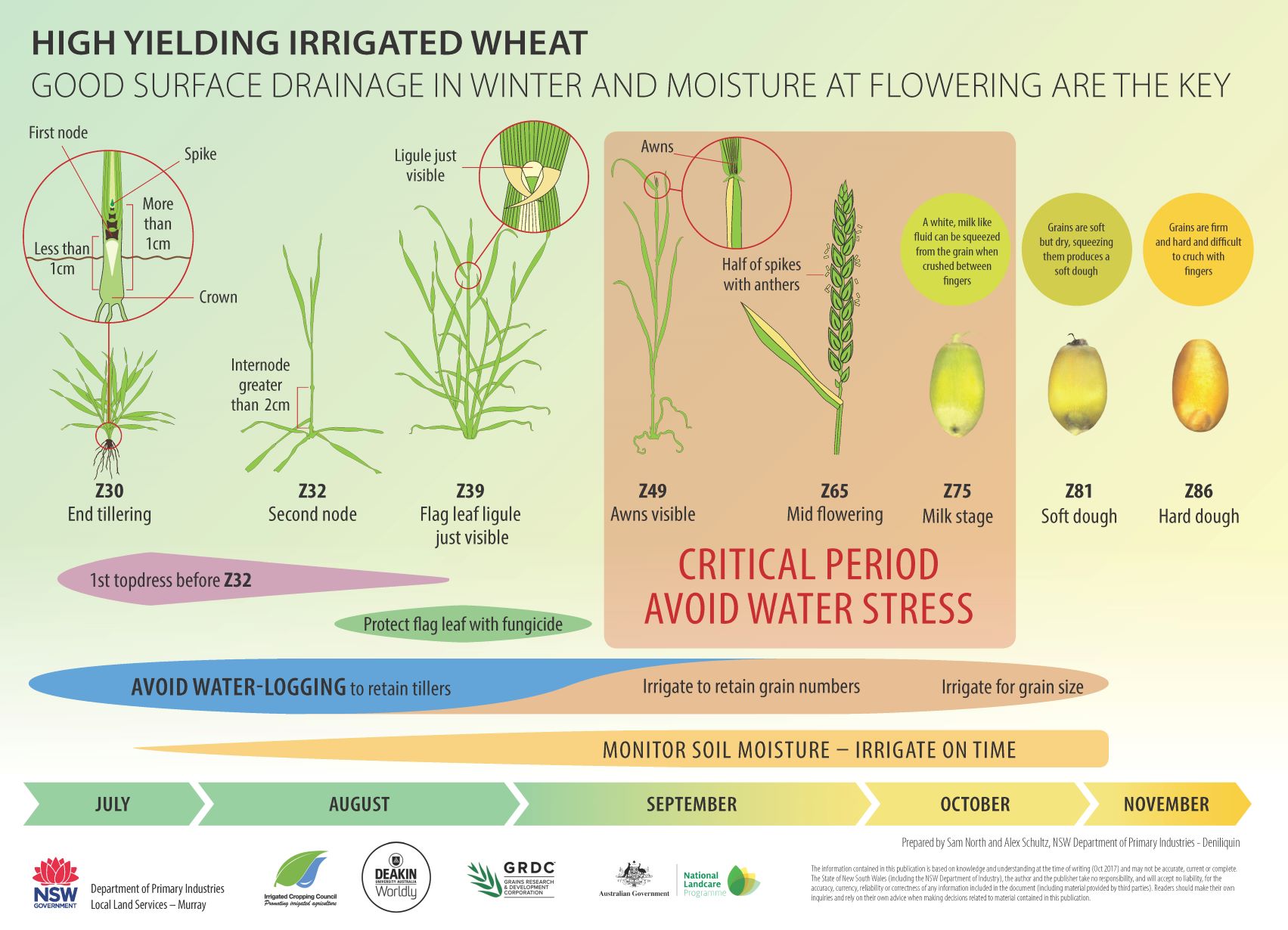Does my wheat crop need topdressing?
04 Aug 2021
 PRODUCTION ADVICE - AUGUST 2021 - AGRONOMY
PRODUCTION ADVICE - AUGUST 2021 - AGRONOMY
By John Fowler
Extension Agronomist
P: 03 5881 9933 | M: 0427 079 138 | E: john.fowler@lls.nsw.gov.au

So how do you determine the correct rate of nitrogen to apply? This can be assessed historically by looking at grain protein levels. In dryland or supplementary irrigated crops with yield potentials up to about 5-6 t/ha, grain protein levels should be about 11.5 per cent. If you constantly harvest crops with lower grain protein levels, you tend to under-fertilise your crops. Conversely, if your grain proteins are regularly in excess of 11.5 per cent, you are over-fertilising. Fertilising to increase grain protein levels is probably best left until around booting or early head emergence to avoid excessive vegetative growth which increases the crop’s lodging risk.
The problem is growers usually do not know how much water will be available to their crops during the growing season and therefore don’t know their crop’s yield potential.
Determining the water availability to crops is basically a ‘best guess’. It is made by taking into account the amount of rainfall received prior to sowing, growing season rainfall to date, average rainfall for the remainder of the season and how much (if any) irrigation water you will commit to the crop.
How much nitrogen is required?
Similarly, growers may not know the amount of nitrogen that is available to the crop in the absence of top dressing so are unsure of how much urea (if any) the crop requires.
The best way to determine the current nitrogen status of the crop is with a deep N soil test. Deep N tests are normally taken prior to sowing, but can be taken after crop emergence if the paddock is trafficable, which many currently are not. In the absence of deep N tests, the next best method is to do tiller counts at the end of tillering (Z30), just before the first node stage (Z31). As a rough guide, every 100 tillers per square metre at Z30 represents about 1 t/ha yield potential. So, for instance, if you estimate you have sufficient moisture for about 5 t/ha, you will need to have about 500 tillers/m2 at Z30. If you have fewer tillers then you will need to apply extra nitrogen to optimise crop yield.
The best way to determine the amount of urea to apply is to develop a nitrogen budget based on the results of a deep N soil test. In the absence of this information, aim to apply about 90 kg/ha urea (or 40 kg/ha N) for every 1 t/ha increase in yield potential required (based on tiller numbers).
Will top dressing urea be profitable?
Currently, the cost of urea is about twice what it was this time last year. Does this mean crops should be top-dressed at a lower rate?
If crops are likely to have enough water to yield 5 t/ha, but only enough N for about 3 t/ha, how much extra N is it economically viable to apply?
Responses to top-dressed N vary from paddock to paddock and season to season. Yield responses can exceed 35 kg grain per kilogram on N top dressed at Z30. A common goal is to expect 25 kg grain per kg of N (i.e. 40 kg N/tonne grain).
If urea cost about $780/t, each kilogram of urea costs $0.78 and each kilogram of N costs $1.70 (i.e. $0.78/0.46).
The return on the $1.70 worth of urea (ignoring application costs) should be about 25 kg wheat, worth about $7.00 (assuming a wheat value of $280/t). This is a return of about $4 for every $1 spent.
This return can only be expected if nitrogen and not water is limiting crop yields
When to top dress crops
The best time to apply the urea is about first node stage (Z31). For crops with target yields up to about 5-6 t/ha, all the top dressing can be applied at this stage. Crops targeting higher yields will require additional top-dressing at later growth stages. The total nitrogen uptake by crops prior to Z30 is quite low compared with nitrogen uptake during stem elongation through to early head emergence.
The following diagram ‘High yielding irrigated wheat’, produced by Sam North and Alex Schultz from NSW DPI, gives a pictorial representation of wheat growth stages from Z30 to Z86. It is an excellent short reference to the key management considerations for each of these growth stages.
Z30 commonly occurs in July, but many crops this season are later maturing than normal and won’t get to Z30 until mid-August. It is worth waiting until Z30, even if crops are yellow due to waterlogging. Early fertiliser applications to waterlogged soils are usually inefficient due to the high nitrogen losses associated with this practice.
